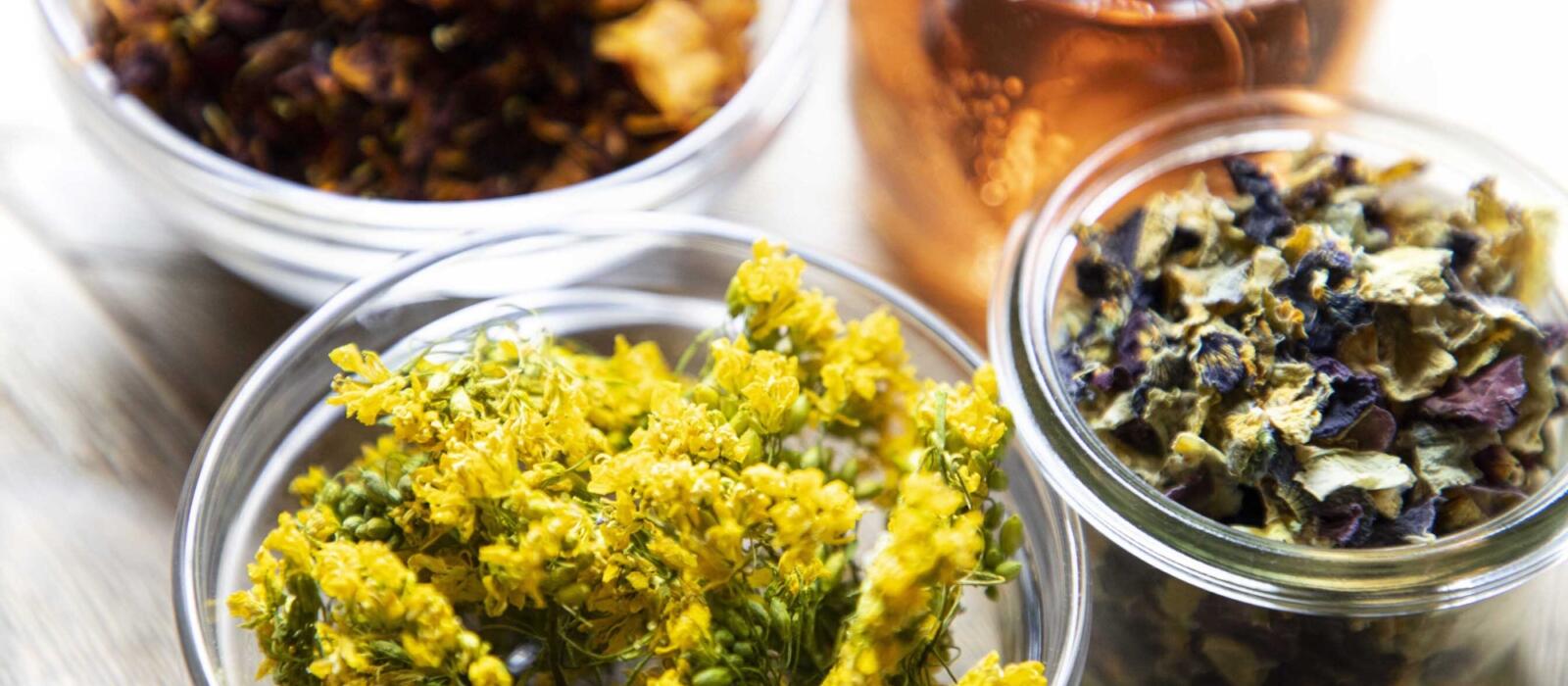Story
Eat What You Can, Can What You Can’t

Do you ever wish you could add fresh tomato paste to a recipe but tomatoes aren’t in season? Or add a splash of color to a Fall or Winter dish, but fresh and bright floral is hard to find in the colder temperatures? Preservation of food, floral and herbs is the secret to creating flavorful and dynamic dishes no matter the season. Food preservation, such as pickling, fermenting, freeze-drying and dehydrating, allows you to slow down a food’s natural lifecycle and utilize the ingredient well beyond its peak season. Preservation is a great way to use excess harvest if you can’t cook everything you grew while it's in its prime. Executive Chef Cassidee Dabney shares her favorite methods for preserving food from her home garden and offers advice and must-haves for anyone who is interested in food preservation.
What are the best foods for preservation?
“Carrots, tomatoes, peppers, eggplants and onions.”
What are you working on preserving right now?
“I have so many tomatoes from my garden this year, and I can’t possibly use them all. Tomatoes freeze really well, and it’s great because when making things like paste, juice and sauces, I can use every piece of the tomato so nothing goes to waste. Preserving excess tomatoes is a great way to take the brightness of Spring and Summer flavor into the Winter. Right now, you may not use a lot of tomato paste in your day-to-day cooking, but once you realize how delicious it is and how easy it is to add to a dish, it’ll become a must-have in your kitchen.”
How to use: Sautée onions with a bit of chicken stock and a splash of cream. Add your homemade tomato paste, and you’ll have the most amazing tomato sauce for pasta.
What about other methods of preservation, like dehydration, pickling and fermentation?
“I love smoking and dehydrating peppers to use in sauces like harissa. As for pickling, I have a great method for eggplants that works really well for me. I like to brine them and then pack them in olive oil, garlic and oregano. This is known as an oil-packed pickling method, which is a more “old school” preservation style. The oil keeps bacteria from getting to the product, and I’m able to keep the eggplant for a couple of months and enjoy at a later date. For fermentation, mushrooms and onions ferment really well, and I like using the fermentation liquid in sauces and stocks. This helps add a uniquely thick and rich flavor to soups and other dishes you wouldn’t get otherwise.”
What’s the best preservation technique for flowers and herbs? What’s the benefit to preserving these items?
“I have a ton of marigolds at home, which are great for pickling. You don’t actually eat the flower after it’s pickled, but rather you can use the liquid from the pickling for a vinaigrette or add it to a sauce – I love any excuse to elevate a sauce. I also think marigolds are a fun little addition that are easily overlooked at first glance because they’re a flower. You can dehydrate them and use them for a touch splash of color when everything on the plate is kind of murky and dark in the middle of Winter. They don’t have a lot of flavor, so they’re pretty versatile when prepared this way. Herbs are quite the opposite. When you dehydrate them, their flavor profiles become deeper, making them get a little bit spicier or a bit richer, depending on the herb. You can hang bundles of herbs right before they start the flowering stage in their lifecycle to dry them, or pick them off and dehydrate them. Dried herbs will last a long, long time and taste great.”
Which methods do you recommend for beginners, and what are some must-have items when beginning with food preservation?
“Before getting started with any preservation process, it’s important to have a clean work space. Make sure that any dishes and utensils you use are fresh from the dishwasher, clean and completely dried. You’ll also want to make sure your ingredients are clean. Cleanliness is extremely important in food preservation because it cuts down on any possibility for cross-contamination, which is a huge safety issue. As for containers, Ziploc bags work great, but I personally love using plastic deli containers. They stack really well, and they make cleaning easier because most are dishwasher safe. Having an extra freezer is handy too.
Using items like a food mill or blender are great when working with tomatoes or ingredients that you’ll need to remove seeds and skins from fast and efficiently. I think dehydrating and pickling methods can be self-taught, but freezing is the easiest method for beginners, as long as you’re using the right food items. Things like zucchini, yellow squash, melons and onions don’t freeze well, whereas items like sweet potatoes, carrots and tomatoes freeze great.
My last bit of advice for someone who is just starting out is to have patience and give yourself some grace. You’re probably going to mess up once or twice. Understand that each time you try and tweak a recipe, you’re going to get better. Be patient, learn from the mistakes you make, know that they happen, and have fun with it!”
